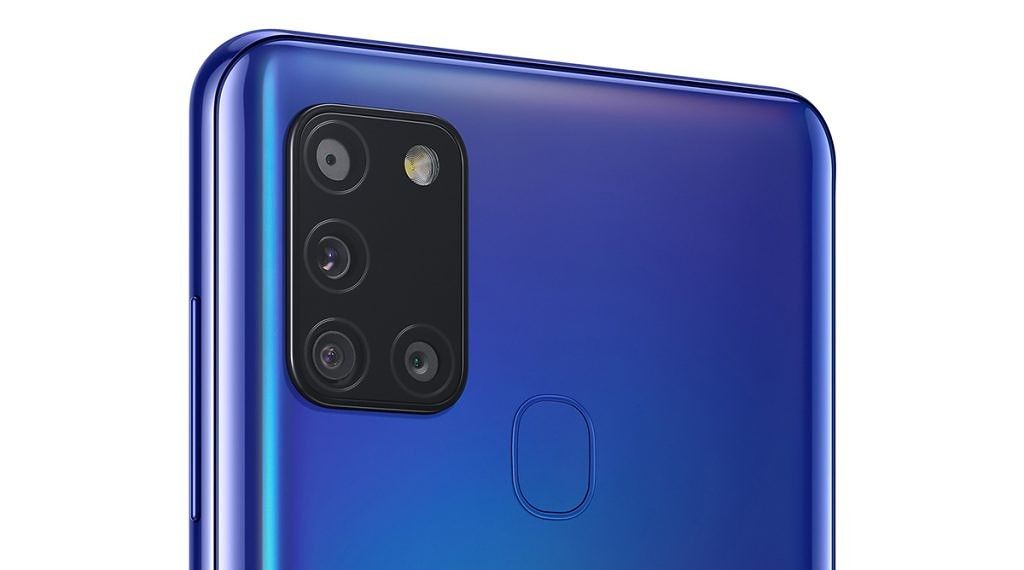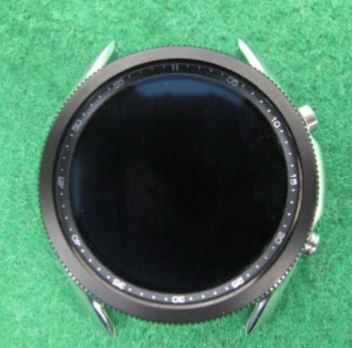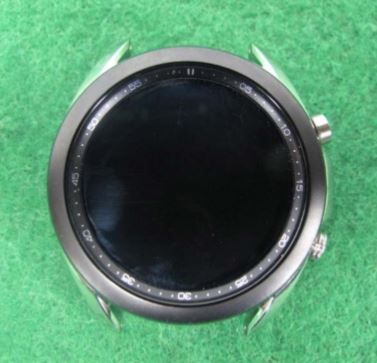Qualcomm is on a roll in the lower mid-range product segment for the last couple of years. The U.S.-based chipmaker has seen many significant design wins from China-based smartphone vendors such as Xiaomi and Realme. In October 2018, it launched the Snapdragon 675 mobile platform, which was followed by the launch of the the Snapdragon 730/G in April 2019. These two launches, which made their way into successful lower mid-range smartphones, were followed by the launch of the Snapdragon 720G in January 2020. One thing that all three of these SoCs had in common was that they didn’t have 5G connectivity. Qualcomm did bring integrated 5G to the Snapdragon 7-series with the launch of the Snapdragon 765/G in December, but the Snapdragon 765 (as well as its overclocked variant, the Snapdragon 768G) was intended for the upper mid-range smartphone market. This left a hole for the lower mid-range segment. Now, Qualcomm has finally plugged that gap by announcing the Snapdragon 690, the first 5G-enabled mobile platform in the Snapdragon 6-series.
The Snapdragon 690 (SM6350) is intended to be the successor of the Snapdragon 675, and it theoretically slots in below the Snapdragon 720G and the Snapdragon 730G. In practice, however, it features newer CPU and GPU designs than even the two 4G Snapdragon 7-series. This makes it Qualcomm’s most powerful SoC yet in the lower mid-range segment. This seems to be the chip that finally brings 5G to the masses of smartphone consumers.

Qualcomm Snapdragon 690 – Features
Let’s go in-depth with the SoC’s components:
CPU and Memory: Kryo 560 (ARM Cortex-A77)
The Snapdragon 690 is an octa-core CPU, featuring a 2+6 CPU core configuration. The two big cores are the Kryo 560 cores, clocked at up to 2.0GHz, while the remaining six little cores are ARM Cortex-A55 cores, just like previous SoCs. The Kryo 560 cores are stock ARM Cortex-A77 cores (Qualcomm is still using the “Built for Cortex” license, but unlike the Cortex-A76, it is not requesting ARM to make any changes to the Cortex-A77 cores). As the Snapdragon 675 featured A76-based Kryo 460 cores, the A77 cores in the Snapdragon 690 bring a measurable performance uplift. Qualcomm says the CPU performance is up to 20% higher, which matches ARM’s marketing regarding the Cortex-A77. With respect to comparisons against the Snapdragon 720G and the Snapdragon 730G, it’s more complicated as their A76-based Kryo 460 cores are clocked higher at 2.3GHz. The Snapdragon 690, therefore, will probably tie against the CPU performance of the Snapdragon 700 series instead of scoring higher.
Qualcomm is still using only two big cores, unlike MediaTek’s Dimensity 800 and Dimensity 820 SoCs which feature four big cores albeit of the older Cortex-A76 architecture. Qualcomm won’t have an edge in terms of single-threaded CPU performance either as the Dimensity 820’s A76 cores are clocked much higher at 2.6GHz, and the lower clock speed will negate the A77’s IPC improvements. Qualcomm is facing stronger competition from MediaTek this year.
The Snapdragon 690 is manufactured on Samsung’s 8nm LPP process. Density-wise, this means it faces a disadvantage compared to the Dimensity 800 and Dimensity 820 SoCs, which are both manufactured on TSMC’s superior 7nm FinFET process. (The Snapdragon 675, on the other hand, was manufactured on Samsung’s 11nm LPP process.)
In terms of memory, the Snapdragon 690 features 2 x 16-bit LPDDR4X memory at up to 1866MHz, with a maximum of up to 8GB RAM.
GPU: Adreno 619L
The Qualcomm Snapdragon 690 features the Adreno 619L GPU, which Qualcomm says makes it 60% faster than the GPU in its predecessor, the Snapdragon 675. That may seem an impressive number, but appearances are deceptive as the Snapdragon 675’s Adreno 612 GPU was relatively unchanged from the Snapdragon 660‘s Adreno 512 GPU, which was launched all the way back in May 2017. However, the Adreno numerical nomenclature does indicate that the GPU is marginally faster than the Adreno 618 GPU of the Snapdragon 720G and the Snapdragon 730G. Will it be able to beat the Dimensity 820’s Mali-G57MC6 GPU? Probably not. The Adreno 619L features support for the Vulkan 1.1 API and Physically Based Rendering (PBR).
AI: 5th Generation AI Engine with Hexagon Tensor Accelerator
The Snapdragon 690 features Qualcomm’s 5th Generation AI Engine. This consists of the CPU, the GPU, the Hexagon 692 DSP, and the Qualcomm Sensing Hub. For the first time in the Snapdragon 6-series, Qualcomm has brought its Hexagon Tensor Accelerator (HTA). This is said to power smarter on-device experiences in security, voice, and camera, including social media filters and seamless transitioning between lenses. The Hexagon Scalar Accelerator and Hexagon Vector Extensions are also present, as expected. The AI performance in the chip has been increased by more than 70% compared to its predecessor, the Snapdragon 675. The Snapdragon 720G and the 730G, on the other hand, are still expected to feature faster AI performance because of their 7-series nomenclature, but the exact differences in the AI Engine architectures between the three chips are unclear for now.
ISP: Spectra 355L
The Spectra 355L consists of dual 14-bit ISPs in the Snapdragon 690, bringing 4K HDR video capture with portrait mode (bokeh), another first for the Snapdragon 6-series. More than a billion colors (1.08 billion) can now be captured in video with this ISP. It supports up to 192MP cameras, and up to 48MP with multi-frame noise reduction (MFNR). In terms of a dual camera setup, it supports up to 32MP + 16MP at 30fps with ZSL. Slow-motion capture is supported at up to 1080p at 240fps. The video capture formats are HDR10 and HLG respectively. The ISP supports the HEIF and HEVC efficient formats to cut down on file size.
Connectivity: Snapdragon X51 5G Modem-RF system
The Snapdragon 690 features Qualcomm’s Snapdragon X51 5G modem-RF system, which is integrated with it (instead of being a discrete system such as the Snapdragon X55). This slots in below the Snapdragon 865’s Snapdragon X55 modem-RF system as well as the Snapdragon 765’s Snapdragon X52 modem-RF system. The Snapdragon X51 is a modem-to-antenna integrated system for multimode 5G. It supports both non-standalone (NSA) and standalone (SA) modes for 5G, with both FDD and TDD support, along with Dynamic Spectrum Sharing (DSS).
As expected, the system features sub-6GHz 5G and does not support the more expensive mmWave 5G (which is of extremely limited use right now, with extremely limited market availability). The Snapdragon X51 has 100MHz of bandwidth for sub-6GHz 5G with 4×4 MIMO. It supports global 5G with multi-SIM functionality. The 5G downlink goes up to 2.5Gbps, while the LTE downlink is up to 1.2Gbps. The uplink speeds for 5G and 4G are 660Mbps and 210Mbps respectively. All of these speeds are predictably lower than the Snapdragon X52 modem-RF system found in the higher-end Snapdragon 765.
The Snapdragon X51 modem-RF system is naturally a multimode system, which means it supports legacy connectivity standards as well. Qualcomm’s proprietary technologies such as Qualcomm 5G PowerSave, Wideband Envelope Tracking, and more, are also featured in the modem-RF system.

Source: Qualcomm
Wi-Fi and Bluetooth: Qualcomm FastConnect 6200
The Qualcomm FastConnect 6200 connectivity system powers the Wi-Fi and Bluetooth on the Snapdragon 690 (it also powers the Wi-Fi and Bluetooth on the Snapdragon 765.) It’s a “Wi-Fi 6-ready” chip, which isn’t exactly clear on what that means. It supports Wi-Fi 5 and previous Wi-Fi standards. The MIMO configuration is 2×2 (2-stream) with MU-MIMO, another first for the Snapdragon 6-series. The channel utilization is 20/40/80 MHz.
The FastConnect 6200 features Bluetooth 5.1 with support for Qualcomm’s aptX Adaptive codec and its TrueWireless technology.
Display
The Snapdragon 690 supports Full HD+ displays with up to 120Hz refresh rates, which is yet another first for the Snapdragon 6-series. The maximum external display support is QHD+ at 60Hz. It supports 10-bit color displays (not that we will see them in the lower mid-range market for years), with support for both HDR10, HDR10+, and the futuristic Rec.2020 color gamut.
Location
The Snapdragon 690 is the first Snapdragon 6-series Soc to feature support for India’s NavIC GNSS system, coming after the Snapdragon 720G. It supports dual-frequency GNSS and all the major GNSS systems such as GPS, GLONASS, BeiDou, Galileo, QZSS, SBAS, and NavIC.
Audio and Charging
The Snapdragon 690 features Qualcomm’s Aqstic audio codec (up to WCD9385). It also features the Hexagon Voice Assistant Accelerator for hardware-accelerated voice signal processing as well as the Aqstic smart speaker amplifier (up to WSA8815).
In terms of charging standards, the chip supports Qualcomm’s Quick Charge 4+ specification.
Finally, the chip also supports DisplayPort output over USB Type-C, although it’s up to device makers if they want to enable or disable the feature.

Source: Qualcomm
Qualcomm Snapdragon 690 – Outlook
Right now, Qualcomm’s lower mid-range SoC portfolio is more than a bit confusing. The Snapdragon 720G and the 730G are technically higher-end SoCs than the brand new Snapdragon 690, but the Snapdragon 690 has a newer CPU architecture and a faster GPU as well. The aforementioned Snapdragon 7-series may have faster AI performance, but the Snapdragon 690 hits back with sub-6GHz 5G connectivity. So will Snapdragon 690 devices succeed Snapdragon 720G devices, or will they be in a different product tier? The answer to that is still unclear.
The first device makers to use this chip will be HMD Global, Sharp, Wingtech, Motorola, TCL, and LG. Notably, the names of Xiaomi and Realme – the two Chinese device vendors making the most value-for-money phones – are missing from the list. This doesn’t mean they won’t launch devices with the chip; it only means the aforementioned vendors will be the first to use it, but it’s still interesting enough to comment on.
In a briefing, Qualcomm told us that we should expect devices powered by the Snapdragon 690 to be available in the $300+ price bracket. However, there was some conflicting information as in response to a media query, we were then informed that in some markets like India, it’s possible that the chip could be used in $150-$200 devices. Also, the chip is slated to power phones launching in the U.S. as well.
The outlook for the Snapdragon 690 is bright because the chip brings several firsts to the Snapdragon 6-series. At the same time, however, Qualcomm would be well advised to look towards the looming shadow of MediaTek. The Helio G90T, the Dimensity 800 and now the Dimensity 820 (powering the affordable Redmi 10X) show that Qualcomm is in danger of losing (and has already lost to a certain extent) its long-dominant position in SoC performance and value. For consumers, this renewed competition is a good thing, and we anticipate some great device launches ahead in the upcoming months of 2020.
Qualcomm Snapdragon 690 – Full Specifications
To check out the full specifications of the Snapdragon 690, open the toggle below, or visit Qualcomm’s website.
Qualcomm Snapdragon 690 - Full Specifications
Qualcomm AI Engine
- Adreno 619L GPU
- Kryo 560 CPU
- Hexagon 692 Processor
- Hexagon Scalar Accelerator
- Qualcomm® Hexagon
 Vector eXtensions (HVX)
Vector eXtensions (HVX)
- Hexagon Tensor Accelerator
- Qualcomm Sensing Hub
- Ultra low power hub for audio, voice and sensors
- Supports AI algorithms at low power
- Support for fusing contextual data streams including sensors, audio and voice
- Supports multiple voice assistants
- Multi-mic far-field detection and echo cancellation
5G Modem-RF System
- Snapdragon X51 5G Modem-RF System – Modem to antenna integrated system for 5G multimode
- 5G standalone (SA) and non-standalone (NSA) modes, FDD, TDD
- Dynamic Spectrum Sharing
- Sub-6 GHz: 100 MHz bandwidth, 4×4 MIMO
- Qualcomm 5G PowerSave
- Qualcomm® Smart Transmit
 technology
technology
- Qualcomm Wideband Envelope Tracking
- Qualcomm® Signal Boost adaptive antenna tuning
- Global 5G multi-SIM
- Downlink: Up to 2.5 Gbps (5G), 1.2 Gbps (LTE)
- Uplink: Up to 660 Mbps (5G), 210 Mbps (LTE)
- Multimode support: 5G NR, LTE including CBRS, WCDMA, HSPA, TD-SCDMA, CDMA 1x, EV-DO, GSM/EDGE Wi-Fi & Bluetooth
FastConnect 6200 System
- Wi-Fi Standards: Wi-Fi 6-ready (802.11axready), 802.11ac Wave 2, 802.11a/b/g, 802.11n
- Wi-Fi Spectral Bands: 2.4 GHz, 5 GHz
- Channel Utilization: 20/40/80 MHz
- MIMO Configuration: 2×2 (2-stream) with MU-MIMO
- 8-stream sounding (for 8×8 MU-MIMO)
- Wi-Fi Security: WPA3-Enterprise, WPA3-Enhanced Open, WPA3 Easy Connect, WPA3-Personal
- Target Wake Time (TWT)
- Integrated Bluetooth
- Bluetooth version: 5.1
- Bluetooth audio: Qualcomm TrueWireless
 Technology, aptX Adaptive
Technology, aptX Adaptive
Camera
- Qualcomm Spectra 355L Image Signal Processor
- Dual 14-bit ISPs
- Up to 192 MP snapshot capture (up to 48 MP snapshot capture with MFNR)
- Up to 32+16 MP dual camera @ 30 FPS with Zero Shutter Lag
- Rec. 2020 color gamut/10-bits per color video capture
- Slow-mo video capture at 720p @ 240 FPS
- HEIF: HEIC photo capture, HEVC video capture
- Video Capture Formats: HDR10, HLG
- 4K HDR Video Capture with Portrait Mode (Bokeh)
- Multi-frame Noise Reduction (MFNR)
Audio
- Hexagon Voice Assistant Accelerator for hardware accelerated voice signal processing
- Qualcomm Aqstic
 audio codec (up to WCD9385)
audio codec (up to WCD9385)
- Total Harmonic Distortion + Noise (THD+N), Playback: -108dB
- Native DSD support, PCM up to 384 kHz/32-bit
- Customizable “Golden Ears” filter
- Qualcomm Aqstic smart speaker amplifier (up to WSA8815)
Display
- Maximum On-Device Display Support:
- FHD+ @ 120 Hz
- Maximum External Display Support:
- QHD @ 60 Hz
- 10-bit color depth, Rec. 2020 color gamut
- HDR10 and HDR10+
CPU
- Kryo 560, Octa-core CPU
- Up to 2.0 GHz
- 64-bit Architecture
Visual Subsystem
- Adreno 619L GPU
- Vulkan® 1.1 API support
- 4K HDR10 PQ and HLG Video Playback (10 bit color depth, Rec. 2020 color gamut)
- H.264 (AVC), H.265 (HEVC) VP8 and VP9 playback
- Physically Based Rendering
- API Support: OpenGL® ES 3.2, OpenCL
 2.0 FP, Vulkan 1.1, DirectX 12
2.0 FP, Vulkan 1.1, DirectX 12
Security
- Biometric Authentication: Fingerprint, Iris, Voice, Face
- On-Device: Qualcomm® Mobile Security, Key Provisioning Security, Qualcomm® Processor Security, Qualcomm® Content Protection, Qualcomm® Trusted Execution Environment, Camera Security Secure Camera, Crypto Engine, Malware Protection, Secure Boot, Secure Token
Charging
- Quick Charge 4+ technology
Location
- GPS, Glonass, BeiDou, Galileo, QZSS, NavIC, and SBAS
- Dual Frequency Support
- Low Power Geofencing and Tracking, Sensor-assisted Navigation
- Near Field Communications (NFC): Supported
General Specifications
- Memory Speed: up to 1866 MHz, 8 GB RAM
- Memory Type: 2 x 16-bit, LPDDR4x
- Near Field Communications (NFC) support
- DisplayPort over USB Type-C support
- 8 nm Process Technology
- Part Number: SM6350
The post Qualcomm unveils the Snapdragon 690, a mid-range chip to bring 5G to the masses appeared first on xda-developers.
from xda-developers https://ift.tt/3fvKUxh
via
IFTTT












 Vector eXtensions (HVX)
Vector eXtensions (HVX)
